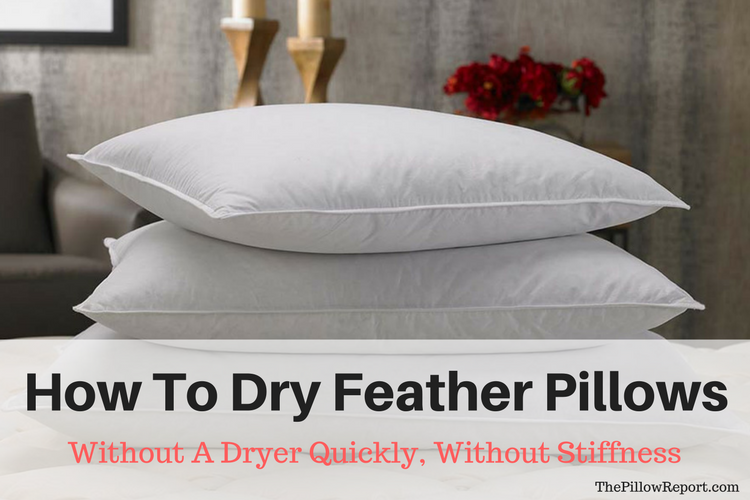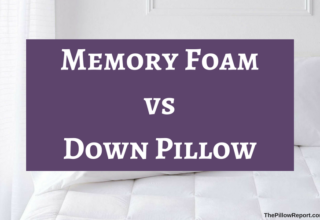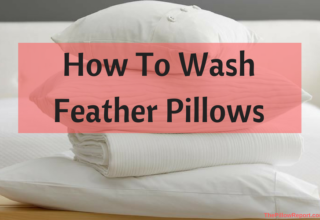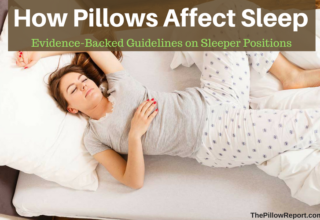Most pillows go through machine-washing unharmed, even where a tag strictly warns against it. But drying feather pillows involves a critical phase as lurking dampness will reintroduce mildew, bacteria or dust mites, your mortal bedding enemies.

Natural approaches such as how to dry feather pillows without a dryer keep harmful chemicals or manual-intensive methods at bay. Air-drying bathes your pillow in sun-rays, which act as a natural disinfectant. The sun helps spruce up, sterilize and fluff up feather fill.
The sun’s heat punches through feathers in the core and everywhere to wipe out microbial guilds. It’s almost insuperable to dry out feather-filled pillows in the low-heat settings making them prone to mold growth.
Things To Consider | How To Dry Feather Pillows Without A Dryer:
1. Sun or Air-Drying Feather Pillows
Lay the damp item on your clothesline on a breezy cool-dry day to evaporate all traces of moisture.
Unlike a comforter, pillows have a better surface area to volume ratio-they take a couple of hours to dry as a bone on a warm, breezy day.
You can also lay it flat on a flat surface in open sunlight but stay on the lookout for lumps or cold spots by squeezing bunched up corners for even distribution of fill.
Fluff it gently after a high volume of water escapes and turn after every hour or two. The heat will fade away any slight moisture while the sun freshens and acts as a natural bleaching agent leaving a natural, odorless smell.
2. How To Remove Mildew Scent
Pillows locked away in a watertight, non-air-permeable material such as plastic, or kept in a humid, non-lit ambiance develop a musty scent with time. The odor points out the existence of moisture or mold.
A thorough airing resuscitates freshness to help you drift off to slumber without discomfort. Moisture naturally infiltrates filling, airing them out helps dehumidify and keep them as fresh as a daisy notwithstanding the room’s humidity level.
- Air pillows out on a humid-free day with some sunshine and clip onto a clothesline or shore them up against a surface for efficient airflow both sides.
- A drying rack on top of a picnic table also permits air to penetrate the underside of the pillows.
- Keep the pillows outside during the day for as long as possible, tossing them hourly.
3. How To Keep Feather Pillows Lumps-Proof
Hardened lumps rub like a ton of bricks softened with a delicate layer of cushioning, resulting in sleepless nights. You can whip up your pillow back into a supportive, comfortable shape with a modicum daily chore and extra maintenance.
- Fluff up the pillow daily by pressing the sides lightly from all edges, directing fill towards the core and repeat the process a few times.
- Set down feather-filled pillows outdoors on a non-humid, sunny day to perk them up and freshen by evaporating trapped moisture. Flip the pillows intermittently placed on a surface like a baking rack for ventilation on both sides.
4. Massage Those Lumps
Feather fillings remain prone to lumping out due to their lightweight composition that collapses and bunches up under pressure, moisture or perspiration.
Kneading the lumps will gently fluff up the pillow, creating extra air pockets that speed up drying. Minimal moisture results in fewer clumps. Massaging with your fingers not only eliminates lumps but also restores original shape.
- Squeeze the filling between the palms of your hands to detect clumps, massage clumps sandwiched between your fingers. Massage the outer shell lightly until the bunch melts away.
- Fluff the pillow by pressing the side together after breaking up individual lumps for the sumptuous cradle.
5. Capitalize On Sunshine For Pillow Laundry
With the sun out and warming up, solar drying your pillow infuses a divine smell while it provides a natural bleaching agent against organic stains like blood or bodily secretions.
Sun-dried pillows smell much freshened than tumble-dried items due to the lack of laundry chemicals.
Wrinkle-free drying tapping into the sun maintains the resilience of natural feathers.
Sun rays disinfect and whiten pillows with UV light that exterminates biological contaminants and creates an inhabitable, non-humid environment.
It feels gentle like a velvet glove as there’s no flipping and tumbling in a machine, which breeds wear and strain on layers while high heat denatures the outer shell.
6. Downsides of Electric Dryers
- Electric-drying exposes delicate feathers to degrading heat that may denature quills or melt away natural oils, which interferes with its ability to restore original volume or loft.
- It increases your electricity bill while these machines churn out tons of CO2 annually.
- Indoor drying injects tones water that fritters away from pillows but condenses on windows making your indoors damp.
- Dryers shrink or damage pillows and pelt ravages that feathers may not withstand for proper functioning.
- Air dry whenever the opportunity comes your way as it cuts back your energy bill while it preserves the natural resilience of feathers. It minimizes carbon emissions, hugs our planet with a better future.
7. When Can You Air-Dry & Where?
You do not need direct sunlight to dry out pillows as they will evaporate moisture on a cold, non-damp day.
On dry wintry weather, humidity tends to nose-dive at midday. Sprawl out pillows before noon after mist and dew peter out and return them indoors before evening dampness reappears.
Frigid winter temperatures may tie your hands, but you can still merge air-drying and tumble-drying to slash off a soaring energy bill.
Ventilate your house efficiently if you dry out items indoors, a dehumidifier will wick away tons of moisture.
8. Feather Pillows’ Drying Tips
- Electric drying takes the driver’s seat as the highest energy guzzler; it can send energy bills straight to the roof.
- If you cannot do without a tumble dryer, check the EnergyStar tag for a more efficient unit that saves cash and conserve our tenuous planet.
- Chemical laundry fresheners for dryer sheets or fabric softeners pose a health risk for immune-suppressed sleepers due to perfumes or dyes in soaps or dryer products.
- Limit exposure to UV light to avoid fading of colored items, you can substitute indirect sunlight with a shaded area.
- Do not wring pillows before basking them in the sun as you will shatter fragile feathers and quills.
Final Verdict
Indoor or outdoor air-drying provides all-natural ways on how to dry feather pillows without a dryer. Feather pillows remain vulnerable to distortion and shrinkage while frequent washing eats away essential oils that give them unique natural breathability, fluffing, and thermal efficiency.
Though it gobbles up chunks of time to air dry outdoors, it’s worth the wait as your energy bill does not soar and you eliminate carbon emissions. It’s shrink-and-fade-free, anti-bacterial, pocket-and-eco friendly- something alien to most dryers.
















